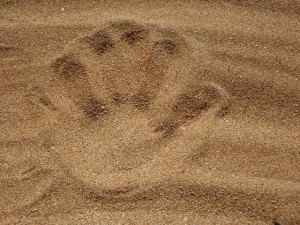There are many versions of the typical history timeline. At one point or another my crew has used them all: wall timelines, timeline notebooks, accordion fold timelines, card timelines, and even sung timelines. Each has their own advantages, and disadvantages. I have finally settled on what seems to be a perfect fit for our family.
By using a multi-sensory approach, we can best integrate learning and move this information about history into long-term memory.
Visual
This is the part that we all think of when we hear the word timeline: A visual memory aid.
- Decide what your goal is for this timeline. It is impossible to include everything, so be picky. What date range fits your goal best? What geographic area? A timeline of American History will look very different from a timeline of world artists, event though both happened at the same time.
- Make a list of the most important events – Research and note specific dates, people, and events. (I like to keep a list of my sources too) I usually write mine in a word processing document along with any additional information.
- Put your list in order chronologically – This is will help you to determine which unit of time you will use. Use the previous document you created and drag&drop information until all of the events are in order.
- Draw the picture – Create a line and divide it into equal segments. Label the dates from left to right, noting change from BC/BCE to AD/CE. Divide using your unit chosen in step three.
- Determine how you want to mark your events. We have enjoyed several options from stickers to printed images off of google with the date and title penciled in below. Finding the perfect image can be the death of a great idea, so you might want to make sure that all of your images are ready before you start.
Of all of the visual timeline options, accordian-fold timelines suit us best. They can be extremely long, showing the passage of time, yet are compact enough to fit into a 3 ring binder. They store easily, and, if printed on card-stock, are durable. Also accordian fold timelines add the tactile experience of flipping pages (many for a long period of time, few for a short period) which aids in comprehending the passage of time. We can see the images in order, and can make connections.
Our favorite visual timeline materials come from Homeschool in the Woods. They have beautiful images, are easy to print, and cover a wide range of topics.
Auditory
No matter how beautiful, well organized, or compact a visual timeline is, we can’t always carry a chart. It just isn’t practical, so moving information into long-term memory is really the best way to learn timelines. One of the simplest ways to memorize major events is to speak them aloud. When we hear ourselves saying the events we can begin to internalize and eventually utilize the information that we recite.
- Start at the beginning every time, and go slow
- Add 2-3 additional events/people per week.
- Speak clearly and with inflection, even if you are only reciting to yourself. Remember, half of the auditory process is the act of speaking, but the other half is listening to your own voice.
- Don’t worry if you stumble. Find your place and continue on.
- Practice regularly – repetition is the key to success.
Our family has had great success using Veritas Press timeline cards and songs as cues for our auditory timeline. We alternate between singing one day, and speaking the events as we flip through the cards the next. (Singing is easier to remember but tends to cause us to need to start at the beginning more often than spoken memorization, so we do both).
Mastery of this information allows us to have constant access to a mental timeline. With this we can figure out where along the “line” of history new events, people, or details fall.
Kinesthetic
Did you know that you can make your timeline a full body experience? I didn’t until I was introduced to the beauty of handmotions by my friend Winnie of JoelWin.xanga.com. Think charades – children physically move from one event to another as they recite major events. The motions flow from one to the next, cueing memory.
Ours covers approximately the same information as these (Warning: Long. There are 5 videos here covering creation to present time. Be patient – memorizing all of this takes time)
- Don’t limit motions to just your hands – feet can show marching and bobbing heads submission
- Record yourself (or choose a pre-recorded timeline) so that you can see the actions at the same time as doing them. – This will also help with repeating the actions accurately, increasing your ability to memorize them.
- Do it with your child – The best way to encourage memorization is to model it yourself. It is great practice for all of us, and may even give you some exercise, so get moving.
- Make it fun. Be excessively dramatic, add funny faces, and use wide body postures. Kids love to see us being ridiculous.
Timelines help our students to visualize the events of the past, and build a framework for understanding the flow of history. Using an activity-based approach including visual, auditory, and kinesthetic methods helps them to not only memorize, but utilize the information that they are given.



So, which one of your children have six fingers?
I never caught that – it really does look like 6 fingers in that photo. :)
Great ideas! My kids always learn best when we do a nice combo of learning styles.